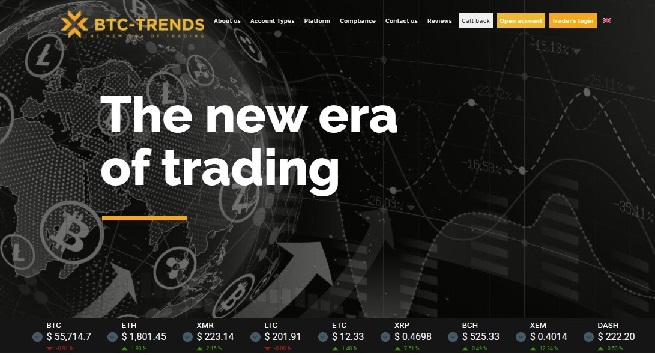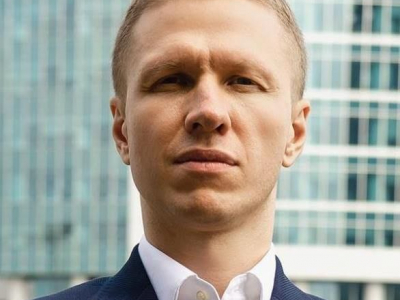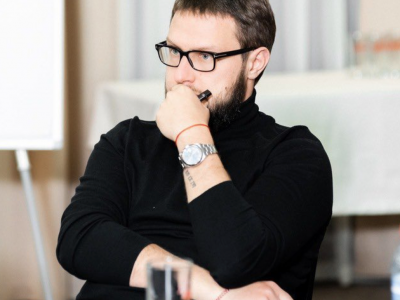The “Great Bitcoin Debate,” “Bitcoin’s civil war” or the “Blocksize Wars” are just some of the expressions used to label the controversy concerning the size of the block in bitcoin’s blockchain. Having started as a technology-prompted discussion about the scalability of bitcoin’s system, the debate eventually reached the issue of governance and thus, became philosophical and even political. CoinFox revisits the history of the debate and takes a closer look at original Bitcoin Core developers.
At the end of March 2016, Andrew Quentson reiterated a question asked numerous times during 2015, namely whether Bitcoin’s civil war was over. According to Quentson, with Bitcoin Core developing SegWit, Ethereum rising and the potential competition in blockchain development coming out from the banking sector, “a compromise of sorts has been reached” and “there is a general feeling that all the arguments that had to be made have now been made.”
Whether the so-called “Bitcoin civil war” is now over or not, we cannot tell, but what is certain is that the blocksize debate has brought up to the surface the issue of Bitcoin’s governance and has significantly altered the leadership model among Bitcoin’s Core development team moving from the ‘benevolent dictatorship’ of bitcoin’s creator Satoshi Nakamoto and his heir Gavin Andresen towards the often criticized detached guidance embodied by current lead maintainer Wladimir J. van der Laan.
Who are Bitcoin Core?
When in November 2015 the Director of the MIT Media Lab Joi Ito asked Gavin Andresen “What does it mean to be a core developer and what is the architecture of the group that you guys are in?”, Andresen responded:
“It depends on who you ask. In the past when I’ve said core developer, I mean one of the five people who has the ability to pull changes into the Bitcoin Core open source software project. That’s me, Wladimir, Pieter Wuille, Greg Maxwell and Jeff Garzik. … Overtime that term has taken on a larger meaning.”
Bitcoin Core is a free open-source software project. Initially known as Bitcoin-Qt and developed by Satoshi Nakamoto, the current bitcoin client is maintained by the Netherlands-based Wladimir J. van der Laan who is also a developer at the MIT Digital Currency Initiative. As a lead maintainer, van der Laan is responsible for reviewing the code, troubleshooting bugs and coordinating the new releases, such as, for instance, the release of Bitcoin Core 0.12.0 announced in February 2016.
Van der Laan is joined by another maintainer named Jonas Schnelli and a number of contributors:
“The Bitcoin Core project has a large open source developer community with many casual contributors to the codebase. There are many more who contribute research, peer review, testing, documentation, and translation.”
Among the major sixteen contributors singled out at Bitcoin Core’s web page, one recognizes the names of some of the long-term Core developers such as Dr. Pieter Wuille, Cory Fields, Gregory Maxwell and Peter Todd. Judging the developer’s degree of involvement based on the number of commits van der Laan is unsurprisingly on the top of the scale with 3442 followed by Gavin Andresen with 1100, Pieter Wuille with 972 and Cory Fields with 332.
Size Does Matter
The conversation concerning the possible increase of the blocksize has been going on publicly at least since 2013 with lead developers such as Peter Todd, Gavin Andresen, Peter Wuille and Mike Hearn exchanging opinions at bitcointalk.org under the thread titled How a Floating Blocksize Limit inevitably Leads towards Centralization.
It was already then that the now former Bitcoin Core developer Mike Hearn expressed his growing concern with Bitcoin’s scalability:
“At the same time, as evidenced by the disagreement on this thread, there are too many unknown variables for us to figure out what will happen ahead of time. The only way to really find out is to try it and see what happens. If Bitcoin does fail to scale then the end result will be a smaller number of full nodes but lots of people using the system – this is still better than Bitcoin being deliberately crippled so it never gets popular because even if the number of full nodes collapses down to less than 1000, unknown future advances in technology might make it cheap enough for everyone to run a full node again.”
The blocksize debate reached its peak in 2015 and largely dominated the discussion among bitcoiners. In January 2015 Gavin Andresen circulated his proposal for a blocksize increase and expressed his belief that “there are no technical barriers to scaling up.”
By August 2015 there were already several BIPs at hand, such as Jeff Garzik’s BIP 100 and Gavin Andresen’s and Mike Hearn’s BIP 101, the latter becoming the basis for forking Bitcoin and developing the so-called Bitcoin XT.
In other words, during the summer of 2015, the rift between the Bitcoin Core developers had grown so wide as to leave the supporters of a block increase Garzik, Andresen and Hearn out of the Core in a manner of speaking. As a result, by January 2016, even newer proposals were being developed such as Bitcoin Classic and Bitcoin Unlimited. By February 2016, Andresen announced that he was withdrawing the BIP 101 as, according to him, it was clear that it would not be adopted.
Also in February 2016, Bitcoin Classic released a new code (0.11.2) which had the potential to double the block size, while at the beginning of March 2016 version 0.12.0 was officially launched. Bitcoin Classic 0.12.0 is based on Bitcoin Core 0.12.0 and, according to the release announcement, “is compatible with its blockchain files and wallet.”
At the same time, on 21 February 2016 Bitcoin Core contributors Cory Fields, Johnson Lau, Luke Dashjr, Matt Corallo and Peter Todd achieved consensus on scaling roadmap with industry leaders and miners, endorsing the implementation of SegWit.
Questions of Leadership
The Oxford Dictionary of English defines ‘civil war’ as “a war between citizens of the same country.” While the citizens of Bitcoin Core’s developers’ community are numerous, only selected few have commit access and are able to implement the changes previously discussed by the collective of contributors. Among them, three have created a particular image of a leader or an anti-leader during the blocksize debate.
The Protagonist
Gavin Andresen, who took over as lead maintainer after the withdrawal of Satoshi Nakamoto, currently works as a software developer at the MIT Digital Currency Initiative and acts as the Chief Scientist of the Bitcoin Foundation. In his ‘farewell letter’ to Bitcoin, Mike Hearn described Andresen as “a solid and experienced leader who can see the big picture” whose only problem, according to Hearn, was that he did not want to job. “So the first thing Gavin did was grant four other developers access to the code as well. These developers were chosen quickly in order to ensure the project could easily continue if anything happened to him. They were, essentially whoever was around and making themselves useful at the time.”
While supporting a blocksize increase, Andresen has maintained respectability as his contributions to the development of Bitcoin Core could not be denied. Even Trace Mayer, while criticising recently the supporters of Bitcoin Classic, admitted that he considers Andresen a bitcoin expert.
The Antagonist
Another supporter of blocksize increase and long-time collaborator of Andresen is Mike Hearn who announced his disenchantment with bitcoin in August last year with the Bitcoin XT release stating that “I feel sad that it's come to this, but there is no other way. The Bitcoin Core project has drifted so far from the principles myself and many others feel are important, that a fork is the only way to fix things.”
Hearn publicly left the bitcoin community in January 2016 when he published an open letter entitled The resolution of the Bitcoin experiment in which he described bitcoin as “a payments network that: couldn’t move your existing money,” “had wildly unpredictable fees that were high and rising fast,” “allowed buyer to take back payments they’d made after walking out of shops, by simply pressing a button,” “is suffering large backlogs and flaky payments,” “which is controlled by China,” “and in which the companies and people building it were in open civil war.”
At the same time his personal journey in and out of bitcoin became the subject of a widely circulated article by the New York Times which dubbed him a bitcoin believer whose faith is in crisis, thus making him both one of the most heard bitcoin voices among the wider public and at the same time a voice of disillusionment and disappointment.
The Neutral and Detached
Wladimir J. van der Laan, the current lead maintainer of Bitcoin Core has demonstrated a more distant attitude compared to his predecessor Andresen and his former collaborator Hearn by refusing to get involved in bitcoin politics. Hence, his style of ‘leadership’ has seen a fair amount of criticism within the community, as evidenced for instance by the r/btc thread started three months ago and entitled “the real problem of Bitcoin now: wladimir j. van der laan - a leader that can't take action, is just not a leader.”
User parban333, for instance, described van der Laan as “a great analytical mind and a great programmer”, adding “but a leader he's not,” while user scotty321 stated his belief that “Wladimir VanDerLaan will go down in history as one of the biggest failures in open source leadership history, ever.”
Diana Bogdan

















